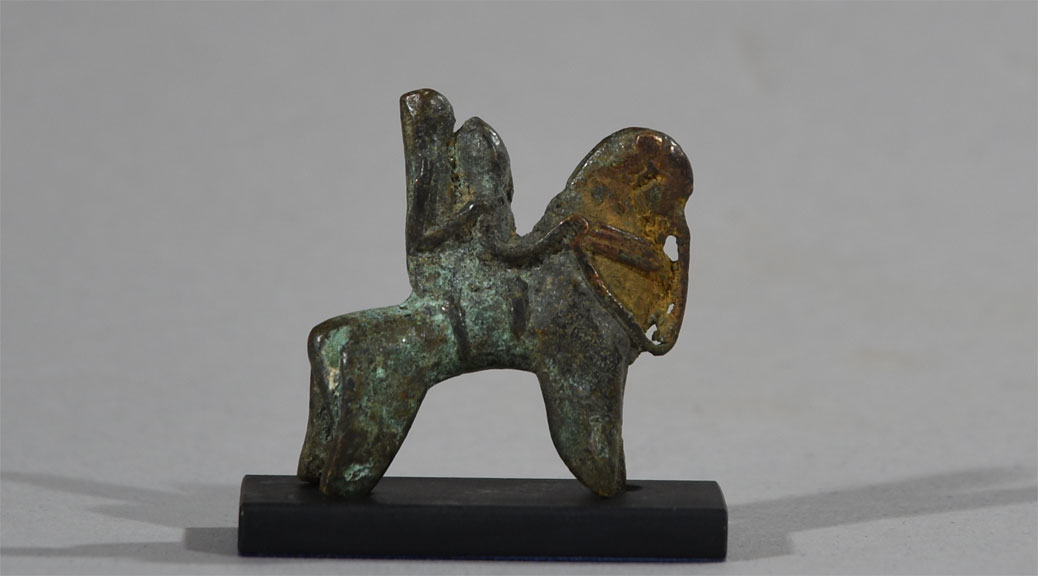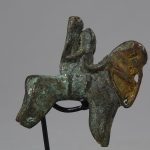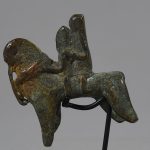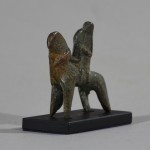HCK 1116-4
Kotoko Warrior/Horseman (Putchu Guinadji), Chad (Cameroon)
Media: Copper/brass/bronze alloy.
Dimensions: H: 5 cm (2”), L: 4 cm (1,6”), W: 1,2 cm (0,5”), Weight 65 gram.
This Putchu Guinadji equestrian warrior was used as a talisman against madness and witchcraft by the Kotoko people in Cameroon and Chad.
These cast equestrian figures, excavated in Chad, was cast by the Kotoko, descendants of the Sao (who disappeared in the 16th Century). Little is known of the Kotoko civilization, but the Sao was one of the oldest metal-working cultures in West Africa. Kotoko bronze equestrian figurines are modeled with elegant curves, tapering legs, and highly detailed tack, bridles, and saddles. Small and therefore portable, these figurines were personal objects used as protective amulets around the neck or sewn in a small leather pouch and worn close to the body to be carried for their therapeutic value.
The Kotoko are descendent of an ancient people known as the Sao who lived in the southern Lake Chad region as early as the second Century BC. Under external pressures the Sao through time moved into northwest present day Cameroon settling in the hilly region where the present day Kotoko claim them as ancestors. Taking up traditions of other immigrant peoples into their areas the Sao buried their dead in large urns, a practice seen across a wide region stretching from the Niger River through Chad, Niger, Nigeria and to the northern regions of Cameroon. Small mounted figures cast in bronze were made as funeral offerings or memorials. Mounted warriors rode horses, sometimes camels and other unknown and imaginative animals. Often there were two riders mounted on a single animal. The horses often had elaborate trappings of harness and saddle and the riders were portrayed wearing detailed headdresses, costumes and jewelry. This is a small scale and plain example of this very old tradition.
Age: Between 16th and early 20th Century.
Provenance: Belgian gallery verifying that the figure was collected in situ in 1922 by Belgian collector.
Literature:
Peroni, Pierluigi: Kotoko Warriors. 2011.
Lebeuf, J.P. and A. Masson Detourbet: La civilisation du Tchad. 1950.
Lebeuf, J.P.: Archeologie tchadienne: les Sao du Cameroun et du Tchad. 1962.
Jansen, G. and Gauthie,r J.G.: Ancient Art of the Northern Cameroon: Sao and Fali. 1973.
Lebeuf, J.P. and A. Masson Detourbet: Les Arts Anciennes de l’Ouest Africain.
Request price for Kotoko





